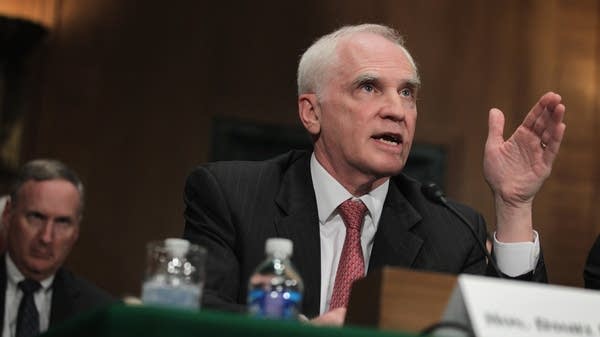The first 100 days of DOGE: "not successful by any means”
The nonprofit Partnership for Public Service says DOGE’s firings, rehirings and putting employees on leave have cost as much as $135 billion.

Elon Musk’s group under the Trump administration — called the Department of Government Efficiency, or DOGE — claims $150 billion in savings from layoffs, canceled government contracts and shuttered agencies such as USAID. Thing is, analysts dispute that number, and it falls far short of what Musk had promised during the election campaign.
You may remember that moment during last year’s election: when Elon Musk was asked how much spending he thought he could cut from the federal government.
“Well, I think we can do at least $2 trillion,” he had said.
“Trump's Department of Government Efficiency went from promising $2 trillion in savings to $1 trillion to $150 billion,” said Jessica Riedl, a senior fellow focused on budget, tax and economic policy at the Manhattan Institute, a conservative-leaning think tank. “And they really only verified about $5 billion in savings or less than one-tenth of 1% of federal spending. Clearly, this is not successful by any means.”
There are savings to be found, however.
DOGE has been looking for waste, fraud and abuse. Experts say a good place to look is fraud, because we have actual figures — an estimate, at least, for how much money the federal government loses to fraud.
Rebecca Shea came up with that estimate. She’s with the Government Accountability Office, the federal government’s auditor.
“The government loses between $233 billion to $521 billion annually in direct financial fraud loss,” she said.
Shea based her findings on patterns of previous fraud. The actual numbers are unknown, because a lot of fraud goes undetected. “So, we don't have that information to tell us exactly where there's higher rates of fraud.”
Ferreting that out requires initially spending more money — not immediately slashing budgets, argued Bobby Kogan, senior director of federal budget policy at the left-leaning think tank American Progress. He also worked as a budget adviser in the Biden White House.
“It takes technical experts and it costs money to go after that fraud,” he said. “And so what we've seen from the Trump administration has actually been the opposite.”
In the first 100 days of Trump’s presidency, DOGE has focused on waste and abuse —subjective terms. It’s laid off federal employees, reduced health research funding, canceled numerous federal contracts and shrunk agencies.
Yet all those cuts are not really making a dent in the federal government’s spending, according to Brendan Duke with the Center for Budget and Policy Priorities.
“When we look at how much the federal government has spent this year, we see that it has spent more over during this calendar year than it did over the comparable period last year or the year before,” he said.
You read that right: spent more, not less.
In fact, the nonprofit Partnership for Public Service says the firings, rehirings and putting employees on leave have cost as much as $135 billion.
The bottom line, said Duke, is that the Trump administration’s cost-cutting effort has been underwhelming at best, because it has so far largely avoided targeting the biggest spending categories.
“One out of every $5 spent, it goes to Social Security. One out of every $4 spent goes to health insurance. So just off the bat, that's about almost half of the federal budget,” he said.
The easier-to-cut portion — so-called discretionary spending — accounts for just a third of total annual expenditures.
In the coming weeks and months, Congress will be looking for more cuts as part of its budget-setting process. Those cuts could potentially come from Medicaid and the children’s health insurance program — both areas that are likely to prove more politically difficult to target.













